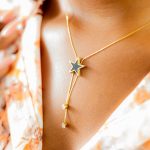When the lights dim, the music swells, and the first model steps onto the runway, Fashion Week feels like a self-contained universe of glamour and spectacle. But behind the scenes of the catwalk and the flashes of street-style photographers lies another layer of the experience—one that unfolds in the bustling cafés, tucked-away cocktail bars, and iconic restaurants that designers and their teams gravitate toward once the shows are done. Fashion Week is as much a culinary and cultural tour as it is a showcase of style, and the table often becomes as significant as the runway.
From late-night ramen in Tokyo to art-filled bistros in Paris, the favorite hotspots of the fashion world tell a story about the personalities behind the designs. They reveal where creativity is refueled, where collaborations are whispered into existence, and where weary models trade stilettos for sneakers under candlelit tables. For anyone curious about the heartbeat of Fashion Week beyond the cameras, the journey begins with a fork, a glass, and a sense of adventure.
The Social Side of Fashion Week
To the outside world, Fashion Week is a series of shows and after-parties, but for those immersed in it, meals become a rare pause in the whirlwind. Breakfasts double as strategy sessions; lunches are scouting grounds for future collaborations; dinners evolve into the most exclusive of networking events.
Designers often describe their favorite eateries as sanctuaries—spaces where the buzz of the city meets the intimacy needed to recharge or celebrate. These spots are chosen not just for the menu, but for the energy. A restaurant can embody a city’s spirit, offering designers a backdrop as vivid as their collections.
During Fashion Week, tables can become extensions of the runway: influencers snapping candids between courses, models arriving in off-duty chic, and creative directors sketching last-minute changes on napkins. Yet, behind the showiness, there is genuine ritual. Sharing a meal is a moment to slow down, to savor not only food but connection—something that high-speed fashion life rarely affords.
Paris: The Timeless Stage for Culinary Chic
No city understands the marriage of fashion and food quite like Paris. During Fashion Week, the City of Light becomes a chessboard of designer favorites, where every arrondissement has its signature haunt.
Café de Flore remains an eternal classic. With its art deco charm and legacy of literary and artistic clientele, it is the unofficial living room for designers like Isabel Marant and emerging creatives who soak in inspiration with their café crèmes. There’s an allure in the routine—sitting at a corner table, watching Parisians glide by in carefully undone outfits, and letting the hum of the city seep into the imagination.
For evening indulgences, Caviar Kaspia is practically an institution. Its intimate wood-paneled rooms have witnessed decades of whispered industry deals and after-show celebrations. Designers and editors alike flock here for baked potatoes crowned with heaping caviar, a meal that feels both indulgent and quietly rebellious in its simplicity.
Parisian hotspots reveal a pattern: fashion insiders favor places with history and personality, where luxury feels effortless rather than loud, and where the boundary between work and play blurs under the golden glow of the dining room.
New York: Energy Meets Experimentation
Across the Atlantic, New York Fashion Week is defined by speed, diversity, and a raw creative energy that spills into its dining scene. Here, the designer’s favorite restaurant is often a hybrid: part culinary playground, part urban hideaway.
Balthazar, in SoHo, is practically an NYFW rite of passage. From the first bite of steak frites to the final sip of champagne, the brasserie buzzes with a sense of theater. Designers appreciate its consistency—a familiar stage in a city that constantly reinvents itself. Models and editors drift through its doors between shows, and its mirrored walls reflect the understated glamor of a New York afternoon.
On the other end of the spectrum, downtown hotspots like Lure Fishbar or Altro Paradiso attract the experimental and the avant-garde. Here, the vibe is modern, the plates are as curated as a fashion mood board, and the clientele reflects the industry’s next wave of creativity. Post-show, it’s not uncommon to see stylists swapping stories over oysters or creative directors dissecting runway reactions with a cocktail in hand.
For New York, the food is part of the experience, but the tempo is key. The best restaurants cater to a city that thrives on movement, offering moments of intimacy without slowing the heartbeat of Fashion Week.
Milan: La Dolce Vita, Designer Style
If New York is about energy and Paris about legacy, Milan exudes a different allure during Fashion Week—an elegant embrace of “la dolce vita.” The city’s designers balance hard work with a love for lingering meals, often choosing spots that blend sophistication with familial warmth.
Giacomo Bistrot embodies this perfectly. With vintage charm and walls lined with books, it feels like stepping into a fashion editorial set in an Italian novelist’s home. Alessandro Michele, formerly of Gucci, has been spotted here, soaking up the atmosphere over classic Milanese dishes like saffron risotto.
For late-night celebrations, Nobu Milan attracts the international crowd with its sleek, contemporary vibe and a menu that caters to both locals and jet-setters. The pairing of high design with culinary innovation mirrors Milan’s own identity: a city where tradition and modernity coexist in a perfectly tailored jacket.
In Milan, meals during Fashion Week are less about speed and more about savoring life between shows—moments that reflect the city’s effortless relationship with beauty, food, and craft.
Tokyo and the Allure of the Unexpected
While the traditional “big four” Fashion Weeks—New York, London, Milan, and Paris—dominate the calendar, Tokyo has increasingly captured the hearts of designers seeking fresh inspiration. The city’s culinary landscape is as diverse and daring as its street style, offering a playground for the adventurous.
Tiny ramen shops in Shinjuku or hidden sushi bars in Ginza become late-night sanctuaries for design teams after long show days. Ichiran Ramen, with its solitary booths and meditative dining style, has an unexpected appeal for creatives seeking solitude in a city that never sleeps. Meanwhile, high-end omakase experiences allow designers to savor the artistry of Japanese cuisine—precision, minimalism, and storytelling through flavor that mirrors the aesthetic ideals of fashion itself.
Here, the “hotspot” isn’t always about being seen but about experiencing something transformative, a reminder that inspiration often arrives when the familiar is left behind.
Hotspots as Creative Fuel
These designer-favored locations are more than just restaurants; they are creative incubators. Over plates of pasta or glasses of sake, collaborations are sparked, campaigns are conceptualized, and friendships are cemented.
Fashion thrives on sensory experiences, and dining is inherently sensory. The texture of linen tablecloths, the gleam of a perfectly plated dessert, the background playlist—all of it feeds the imagination. Just as a walk through a vintage market can inspire a new collection, a well-chosen restaurant can become a touchstone for memory and creativity.
The physical act of leaving the show venue and entering a favorite dining spot also provides a mental shift. It’s a reminder that even in an industry built on aesthetics and deadlines, pleasure and presence are essential parts of the process.
The Unseen Ritual of Fashion Week Dining
There’s a quiet poetry in the rhythm of Fashion Week meals. Morning coffees are often solitary, meditative moments before the storm of cameras and critiques. Lunches are functional yet collaborative, serving as the connective tissue between shows. Dinners, however, are the heartbeats of celebration and reflection, where the pressure of perfection softens under the warmth of conversation and shared indulgence.
For first-time observers, it might seem like a glamorous blur. But to the insiders, these meals form an invisible thread through the chaos—a ritual that reminds them why they create in the first place. The table, like the runway, becomes a stage for connection, expression, and inspiration.




No Comment! Be the first one.